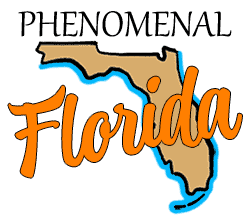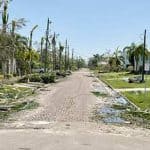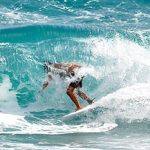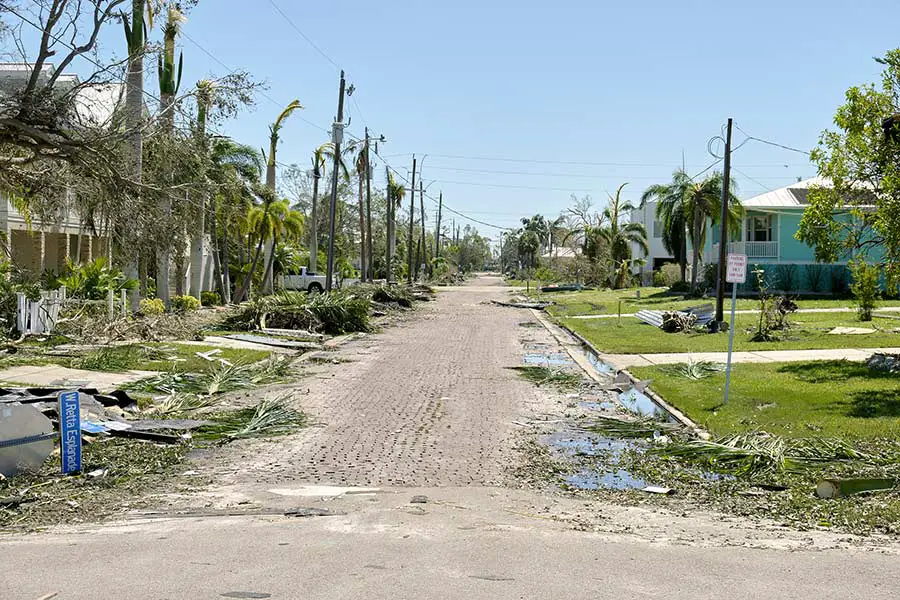
Florida is usually known for sunshine and blue skies, but hurricane season can bring unwelcome harsh weather. So what are hurricanes like in Florida?
Hurricanes in Florida range from minor storms that cause minimal damage to monstrous storms that create catastrophic destruction. Hurricanes feature intense wind, heavy rain, and storm surge, all of which can be dangerous and destructive.
Floridians and visitors to Florida should take hurricanes seriously and prepare ahead for storm season.
So what exactly is a hurricane? Where do hurricanes go in Florida? What kind of damage do hurricanes cause? How can you prepare ahead for hurricanes? Read on to learn the answers to these hurricane questions and more.
Hurricanes in Florida
While Florida has beautiful weather, the state’s location makes it prone to occasional hurricanes. Some of Florida’s hurricanes are minor events that Floridians brush off as “rain with a name.” However, other hurricanes are high-powered monstrosities that cause catastrophic damage. Hurricanes Ian, Irma, and Andrew are prominent examples of highly destructive hurricanes that struck Florida.
So what is a hurricane? Hurricanes evolve from rotating low-pressure weather systems called tropical cyclones. These cyclones generate thunderstorms, tornadoes, rain, heavy winds, and storm surge that floods coastal regions and can eventually evolve into tropical storms or hurricanes.
The difference between a cyclone, a tropical storm, and a hurricane is based on wind speed. A cyclone is not considered a hurricane until it has sustained wind speeds of more than 74 miles per hour.
| Type of Storm | Sustained Wind Speed |
|---|---|
| Tropical Cyclone | Less than 39 mph |
| Tropical Depression | 39-73 mph |
| Category 1 Hurricane | 74-95 mph |
| Category 2 Hurricane | 96-110 mph |
| Category 3 Hurricane | 111-129 mph |
| Category 4 Hurricane | 130-156 mph |
| Category 5 Hurricane | 157+ mph |
Where do Hurricanes Strike Florida?
The region of Florida that suffers the most frequent hurricanes is northwest Florida. Also known as the panhandle, this region of the state sits just north of the Gulf of Mexico. The warm, moist air over the Gulf tends to intensify hurricanes, and prevailing weather patterns push storms into the panhandle.
After the panhandle, the southern half of the Florida peninsula is the most likely to get struck by hurricanes. This region includes the Tampa Bay area, the Miami metro, and the beautiful gulf beaches near Naples and Sarasota. Both Atlantic and Gulf storms strike south Florida, with about the same number of storms hitting southeast Florida and southwest Florida.
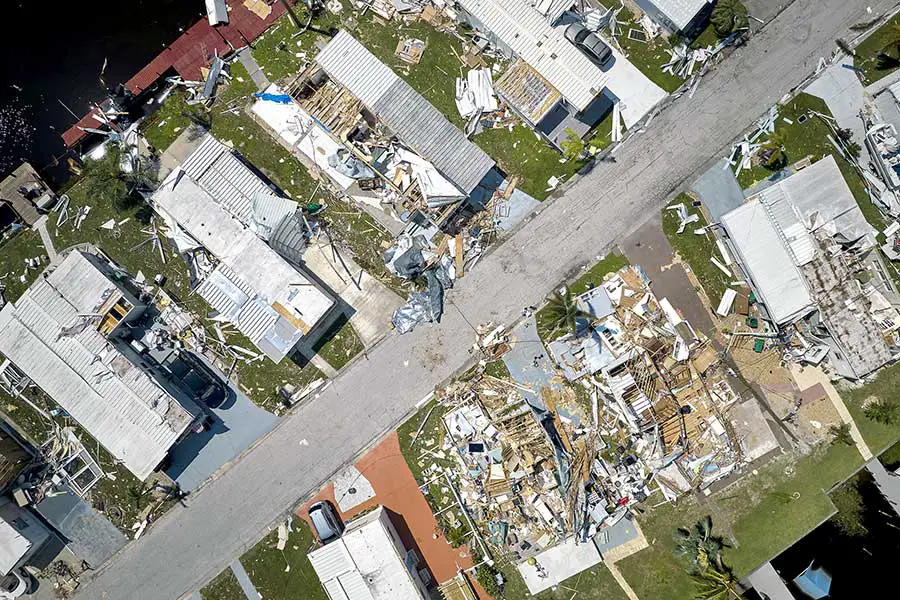
The region of Florida least likely to be struck by a hurricane is northeast Florida. This area includes the popular cities of Jacksonville and St. Augustine. While hurricanes here can still be dangerous, they are usually less impactful in this region.
While inland Florida typically does not get the brunt of storms (and does not get storm surge), it can still be affected by heavy winds, rain, and flooding. In addition, influxes of evacuees from storm-struck regions can increase local competition for resources like fuel and food, so it’s a good idea to be ready even if you live far away from the beach.
What is it Like in a Florida Hurricane?
In a hurricane, the wind will be the first thing you notice. The wind will groan, shudder, and push your home’s walls, windows, and doors. You may feel the floors or ground shake as heavy winds whip about.
There is a high probability that flying debris will impact your home. Many residents of Florida will board over their windows and doors when storms approach to prevent damage from flying debris. Shingles may blow off your roof, or portions of your roof may be ripped off altogether by the storm.
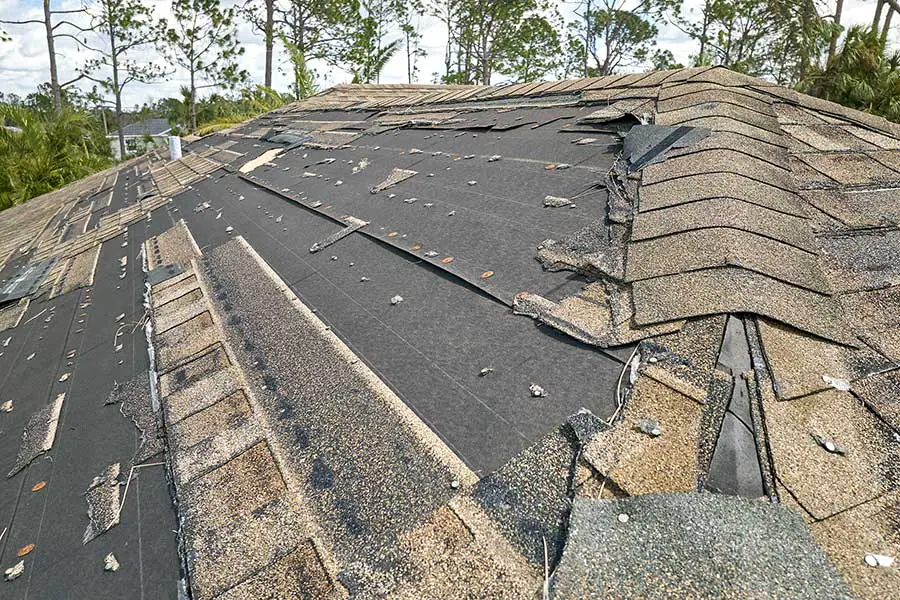
For example, a category 1 hurricane has sustained wind speeds of more than 74 miles per hour. That’s strong enough to blow shingles off roofs and cause damage to things like siding, gutters, and trees.
In addition, power lines and poles may break or become damaged, and the storm will blow about tree limbs, leaves, and other debris. This damage becomes worse as storms intensify.
A category 3 hurricane such as 1995’s Hurricane Opal is even worse. A cat 3 storm will bring sustained winds of more than 110 miles per hour, which can cause significant damage even to modern homes and buildings. Powerlines will be downed, roads will be blocked by debris, and the aftermath can last for months as locals work to repair the damage.
A category 4 storm, like Hurricane Ian, will bring catastrophic destruction. Wind speeds will be between 130 and 156 miles per hour. Cat 4 storms can blow the roofs off houses, rip the sides or facades off buildings, and push around heavy objects. Cars, airplanes, trees, outbuildings, sun porches, decks, boats, and other outside objects may be destroyed.
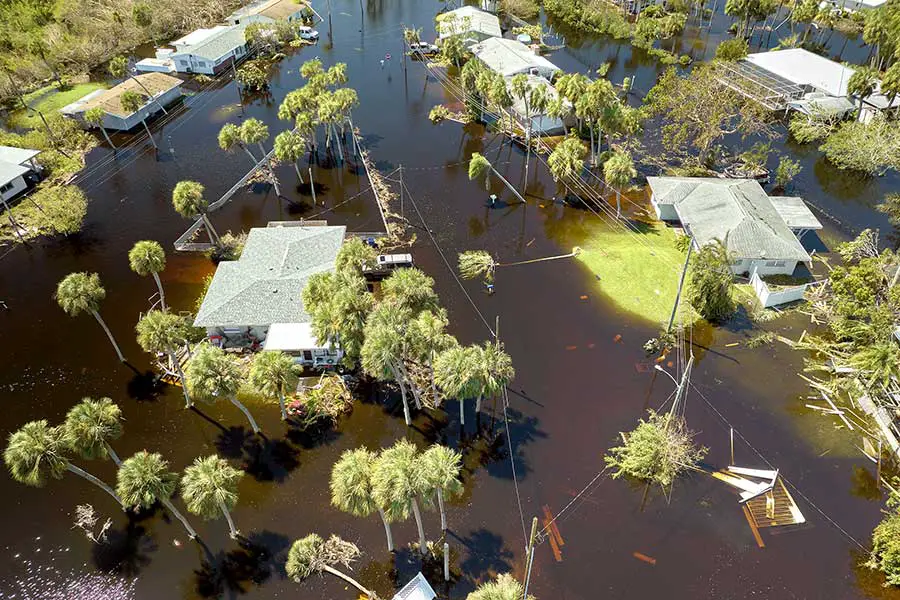
The rain is the second thing you will notice. Recent hurricanes have been quite rainy. For example, hurricane Ian brought more than 12 inches of rain to some places in less than 24 hours. This torrential rain overwhelms drainage systems and causes severe problems with flooding.
Floodwaters can damage or destroy buildings, wash away bridges and roads, destroy cars and vehicles, and make it impossible for people in the flooded area to escape without rescue.
Coastal areas are prone to a kind of flooding called storm surge, which occurs when the storm blows a ‘wall’ of seawater onshore. Storm surge can destroy roads, houses, boardwalks, docks, marinas, and other structures, and it often leads to prolonged flooding and can cause some areas to become completely isolated.
For example, in September of 2022, Hurricane Ian caused an 8 to 15 feet of storm surge. That is enough floodwater to force people out of their homes, as 8 to 15 feet of water will completely submerge the living spaces of an average single-story home or even cause it to collapse.
Phenomenal Florida Fun Fact: In the northern hemisphere, hurricanes spin counterclockwise, and in the southern hemisphere, cyclones spin clockwise.
Other Posts of Interest
- Does Florida Have The Longest Coastline?
- Is Florida Part Of The Caribbean?
- Why Is Publix So Popular In Florida?
- Can You Surf All Year Round In Florida? +Best Places To Surf
Preparing For the Storm
Watch the news during any hurricane, and you’ll see footage of long lines at the gas pump and nervous crowds flocking to Walmart. Wise Floridians will prepare ahead to avoid the panicky crowds. Here are some essential items you should have on hand to be prepared for a storm.
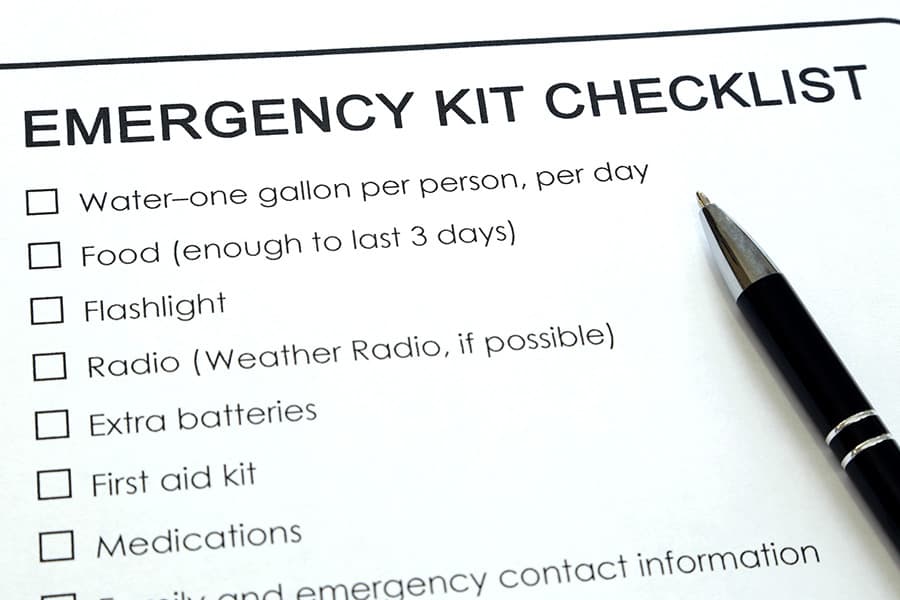
Household Supplies
- Generator. Some people have whole-home generators, but even a portable generator can power a fridge and a window AC unit.
- Extension cords and power strips.
- Gasoline for your vehicles and generator. Gas pumps may be out for days after a storm.
- Pro Tip: Label your canisters with the gasoline product (ethanol-free, E85, etc.) and the date they were filled.
- Weather radio.
- First aid kit.
- Flashlights, lanterns, and batteries.
- Pro Tip: Glow Sticks are a fun way to provide light for kids during the storm.
- Power banks and chargers.
- Duct tape and plastic sheeting.
- Grill or camp stove, plus fuel.
- Gray water for flushing toilets.
- Window AC unit, personal fans, floor fans.
- Chainsaw or axe for clearing debris after the storm.
Groceries
- Water. One gallon per person per day for 3-5 days. While soda and sports drinks are also great to have on hand, water is the best thing to drink to stay hydrated.
- Non-perishable food. Good storm foods are noodles, rice, canned soup (and a manual can opener), peanut butter, protein bars, granola, cereal, jerky, and comfort foods like chips or candy. Keep enough food on hand to last at least 3-5 days.
- Paper plates, plastic cups, and utensils.
Personal Supplies
- Identity documents, e.g., driver’s license, insurance cards. Keep these in a waterproof bag or case.
- Cash. ATMs and credit cards may not work for days or weeks after the storm.
- Medications and hygiene supplies.
- Notebook and pen or pencil.
- Games, books, and other activities to keep kids (and adults!) busy.
- Baby wipes or body wipes.
Pet Supplies
- Pet food for 3-5 days.
- Medications.
- Documentation, e.g., vaccination records.
- Leash, harness, collar, and crate.
Evacuation Plans
In a bad storm, you may be asked or ordered to evacuate. It is a good idea to follow evacuation orders.
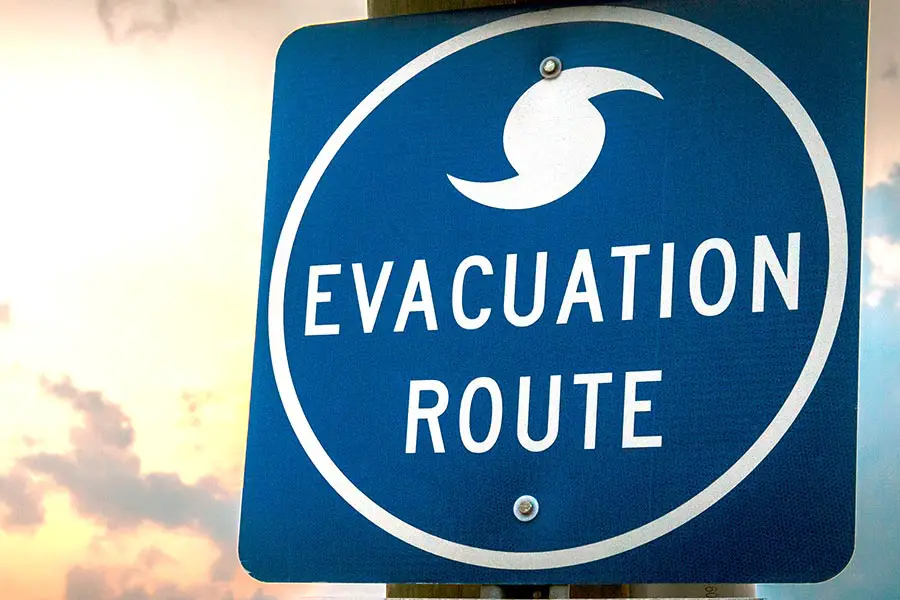
During the most intense parts of a storm, emergency services are not available. If you choose to ignore evacuation orders, you will be on your own until the storm has passed. You may not have access to any resources for several days to possibly a week or more after the storm.
So where should you evacuate to? Many people evacuate locally. For example, if someone lives near the shore in Apollo Beach, they might evacuate to Orlando or Jacksonville. Other people evacuate further, traveling to Georgia or Tennessee to ride out the storm far from the impact.
In an evacuation, hotels fill up fast. Therefore, you will need to be flexible and may have to drive further than anticipated to evacuate safely. If you have friends or family within driving distance, talk to them before storm season about whether you can shelter with them. If you have a camper or a motorhome, consider using it as an evacuation shelter, but be aware that campgrounds will fill up fast and are prone to wind and flood damage if they are within range of the hurricane.
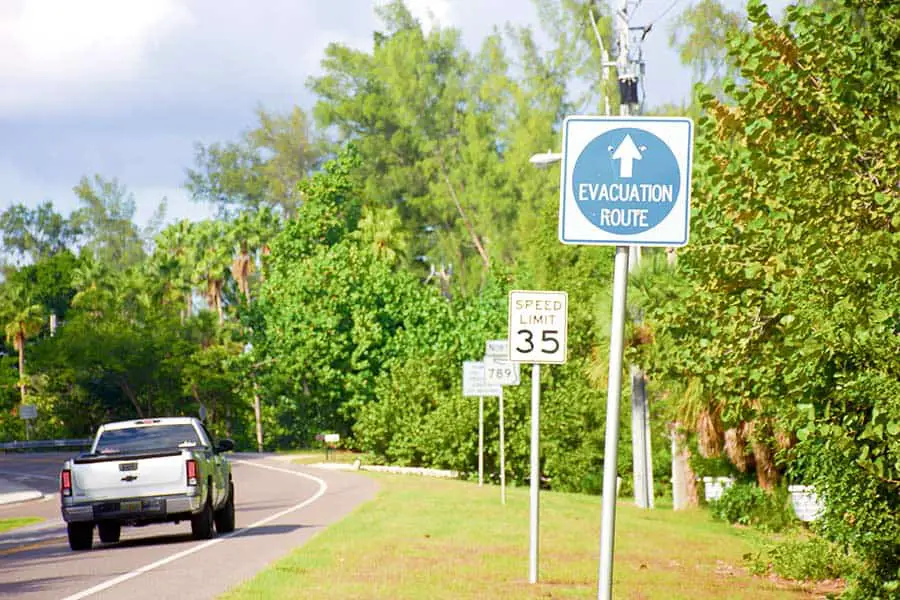
During an evacuation, traffic is intense. It is a good idea to plan your evacuation route ahead of time and to make backup plans. Expect highways and surface roads to be extremely congested. It will take a long time to get to your evacuation destination. Prepare for a long ride. Evacuation is not fun, but it is better than being stuck in storm surge.
Riding Out the Storm
Most Floridians do not have to evacuate during hurricanes. Many people choose to ride out the storm even in the face of evacuation orders, although we would not recommend this.
If you are riding out a hurricane, you should stay inside. It’s common to see videos of daring Florida people surfing in drainage ditches or joyriding their boats down the street amidst the storm, but just because a few people on YouTube do it does not mean you should do it.
Have some flashlights and lanterns out and readily available. Glow sticks are a great way to have light and color during the storm and have the added benefit of being fun for the kids. Activities like coloring books can be an excellent way to pass the time.
Many Floridians stock up on calorie-dense, psychologically satisfying foods like chips and cookies to munch on during the storm. It is not uncommon for people to have Hurricane Parties, where families or friends will gather in one home to have some companionship amidst the stress of the storm. Hurricane Parties sometimes feature adult beverages, but be careful not to overdo it during the storm as you do want to have at least some of your wits about you.
During the hurricane, monitor emergency communication channels. Check your weather radio, local news, or the National Hurricane Center for updates. Once the storm has passed, you can emerge into the outside world to begin the arduous task of cleaning up.
Hurricane Etiquette
During an event like a hurricane, it’s important to set aside our differences and work together. While you are absolutely not required to share supplies or help other people, it is good etiquette to do what you can to help the people in your community.
Lending supplies and equipment to people in need is a great way to build new friendships, strengthen existing relationships, and otherwise break the ice. Disasters are tragic, but they also tend to bring out the helper in people.
Unfortunately, not everybody wants to be a helper. Looters, scammers, and thieves often pop up after storms. So don’t try to be the police: if you see crimes happening, call 911. That said, 911 response times may be very long after a storm, so it’s a good idea to familiarize yourself with Florida’s stand-your-ground laws and prepare to defend yourself from looters and thieves ahead of time.
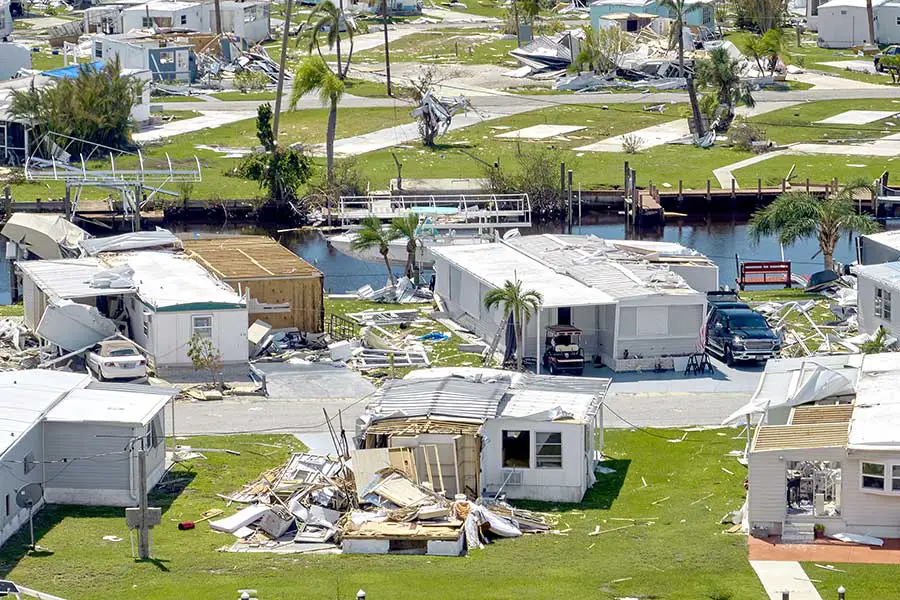
Be especially wary of scammers in the aftermath of the storm. Unsolicited offers of repair work from “contractors,” “roofers,” and others are often scams. If someone offers you something that’s too good to be true, be suspicious.
Traveling During Hurricane Season
Major storms can disrupt air travel and cause congestion on Florida’s highways. If you plan to travel to or from Florida during storm season, you should plan ahead.
First, make a backup plan. For example, if a storm blows in while you’re on vacation, you may want to consider returning home early unless you are willing to accept the risk of being stuck wherever you’re staying for several days.
What if you’re traveling to Florida after a storm has blown through? First, even if a storm has destroyed one part of Florida, the rest of the state may be unaffected and open for business.
For example, 2022’s Hurricane Ian wreaked incredible havoc and destruction in the Fort Myers area. Yet, while vacationers heading to Fort Myers and Sanibel needed to reevaluate their plans, popular destinations like Clearwater, Daytona, and Miami were relatively unimpacted and open for business.
Hurricanes in Florida: Inevitable but Survivable
Florida is a beautiful state, but between June and November, the state is prone to occasional hurricanes. While many of these storms end up being relatively inconsequential, a major hurricane can be a terrifying and destructive natural disaster. Hurricanes are dangerous storms, but with a bit of preparation and forethought, you can survive and endure in the wake of even the worst hurricanes.
